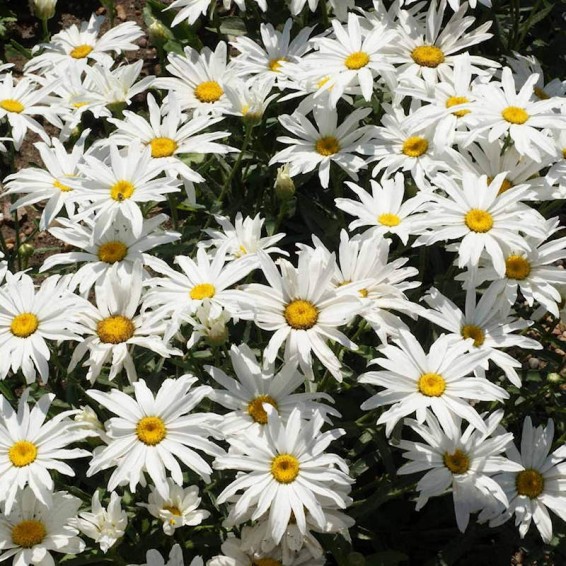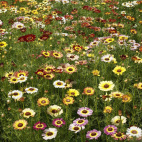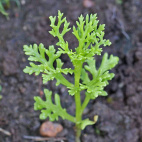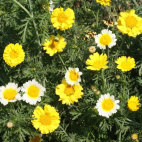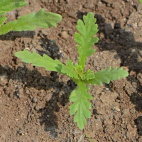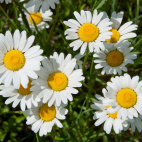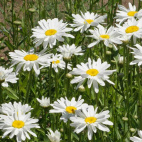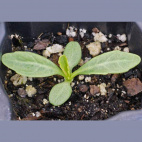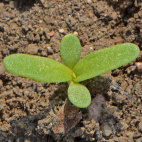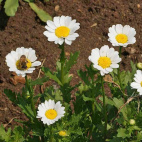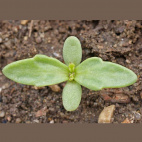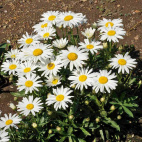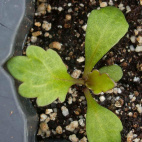Dwarf Shasta Daisy Seeds
- HOW TO GROW
- FAST FACTS
- REVIEWS
HOW TO GROW
Sowing: Direct sow dwarf Shasta daisy seeds in spring after the last chance of frost, sowing on the surface of the soil; press the soil down lightly and keep moderately moist until germination, which should take place within 10-14 days. To start indoors, sow on the surface of a flat 6-8 weeks before the last frost of spring. Keep the soil lightly moist and at a temperature of 70 degrees F until germination. Transplant or thin the seedlings as soon as they reach a height of several inches.
Growing: Water seedlings regularly until they become established; mature plants also appreciate occasional watering, but too much moisture will cause disease and root rot. To encourage branching and bushy growth, pinch off the growing tips. When grown from seed, Shasta daisies may not bloom fully until their second year. Tall plants may need support or staking. Watch out for aphids, slugs, and earwigs, which can cause damage. This plant will self-seed and spread slowly by rhizomes; mature plants can also be divided in the fall or early spring. Cut the plants down to 2" above the ground after the first frost. These plants attract butterflies and resist deer.
Harvesting: Daisies make long lasting fresh flowers; cut the stems long and place them in water immediately.
Seed Saving: Late in the season, allow the blossoms to fully mature; when the centers turn brown, cut them off and spread them out to dry away from direct sunlight. After about two weeks or when the heads have fully dried, rub them lightly to separate the seed from the husks. Store the dwarf Shasta daisy seeds in a cool, dry place.
FAST FACTS
Latin Name: Chrysanthemum maximum
Species Origin: Europe
Type: Garden Flowers
Life Cycle: Perennial
USDA Zones: 2, 3, 4, 5, 6, 7, 8, 9, 10, 11, 12
US Regions: California, Mountain, Arid/Desert, Plains/Texas, Midwest, Northern, Northeast, Southeast
Seeds per Ounce: 27,000
Stratification: No Stratification
Germination Ease: No Stratification
Sunlight: Full Sun, Part Sun
Height: 16 Inches
Color: White
Bloom Season: Blooms Early Summer, Blooms Late Summer
Uses: Cut Flowers, Deer Resistant
Great germination
Planted these as soon as they arrived in march 2024 and already they are started to pop up! Excited for this summer!
always quality seeds
I haven't used these seeds yet, but I am very pleased with all of my purchases from Everwilde. I buy my seeds here because they provide good planting instructions and often have pictures of cotyledon and first leaves especially helpful when planting wildflower beds.
DESCRIPTION
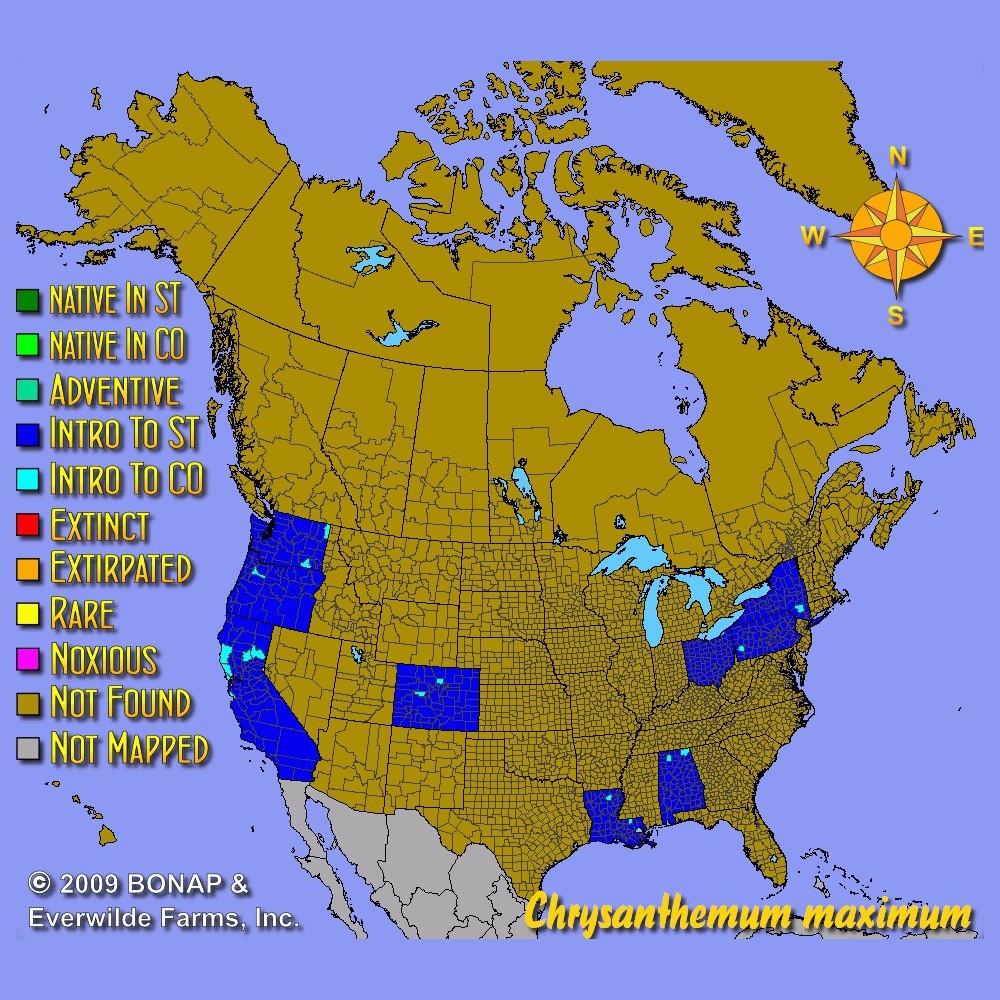
HOW TO GROW
Sowing: Direct sow dwarf Shasta daisy seeds in spring after the last chance of frost, sowing on the surface of the soil; press the soil down lightly and keep moderately moist until germination, which should take place within 10-14 days. To start indoors, sow on the surface of a flat 6-8 weeks before the last frost of spring. Keep the soil lightly moist and at a temperature of 70 degrees F until germination. Transplant or thin the seedlings as soon as they reach a height of several inches.
Growing: Water seedlings regularly until they become established; mature plants also appreciate occasional watering, but too much moisture will cause disease and root rot. To encourage branching and bushy growth, pinch off the growing tips. When grown from seed, Shasta daisies may not bloom fully until their second year. Tall plants may need support or staking. Watch out for aphids, slugs, and earwigs, which can cause damage. This plant will self-seed and spread slowly by rhizomes; mature plants can also be divided in the fall or early spring. Cut the plants down to 2" above the ground after the first frost. These plants attract butterflies and resist deer.
Harvesting: Daisies make long lasting fresh flowers; cut the stems long and place them in water immediately.
Seed Saving: Late in the season, allow the blossoms to fully mature; when the centers turn brown, cut them off and spread them out to dry away from direct sunlight. After about two weeks or when the heads have fully dried, rub them lightly to separate the seed from the husks. Store the dwarf Shasta daisy seeds in a cool, dry place.
FAST FACTS
Latin Name: Chrysanthemum maximum
Species Origin: Europe
Type: Garden Flowers
Life Cycle: Perennial
USDA Zones: 2, 3, 4, 5, 6, 7, 8, 9, 10, 11, 12
US Regions: California, Mountain, Arid/Desert, Plains/Texas, Midwest, Northern, Northeast, Southeast
Seeds per Ounce: 27,000
Stratification: No Stratification
Germination Ease: No Stratification
Sunlight: Full Sun, Part Sun
Height: 16 Inches
Color: White
Bloom Season: Blooms Early Summer, Blooms Late Summer
Uses: Cut Flowers, Deer Resistant
Reviews
Review
Great germination
Planted these as soon as they arrived in march 2024 and already they are started to pop up! Excited for this summer!
Review
always quality seeds
I haven't used these seeds yet, but I am very pleased with all of my purchases from Everwilde. I buy my seeds here because they provide good planting instructions and often have pictures of cotyledon and first leaves especially helpful when planting wildflower beds.
Also Consider These:
-
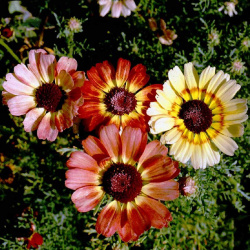 Painted Daisy Seeds
Chrysanthemum carinatum
An annual from the coasts of North Africa, this particular daisy variety boasts a boast a tricolor ring pattern. This showy wildflower blooms through summer and fall and then reseeds itself for the next year's blooms.Quick View$3.48 Pkt - $7.59 / Oz
Painted Daisy Seeds
Chrysanthemum carinatum
An annual from the coasts of North Africa, this particular daisy variety boasts a boast a tricolor ring pattern. This showy wildflower blooms through summer and fall and then reseeds itself for the next year's blooms.Quick View$3.48 Pkt - $7.59 / Oz -
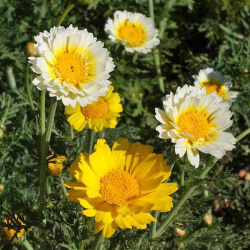 On Sale!
Garland Daisy Seeds
Chrysanthemum coronarium
Originating in the Mediterranean region, these showy annual daisies make an attractive addition to any planting. The fragrant greens are also featured in Chinese, Japanese, and Taiwanese cuisine.Quick View$3.48 Pkt - $5.96 / Oz
On Sale!
Garland Daisy Seeds
Chrysanthemum coronarium
Originating in the Mediterranean region, these showy annual daisies make an attractive addition to any planting. The fragrant greens are also featured in Chinese, Japanese, and Taiwanese cuisine.Quick View$3.48 Pkt - $5.96 / Oz -
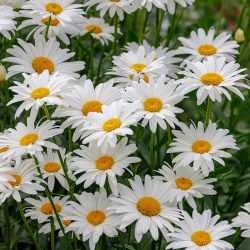 Ox Eye Daisy Seeds
Chrysanthemum leucanthemum
The famous "He Loves Me, He Loves Me Not" Daisy brings sunshine wherever it blooms. Originating in Europe, the hardy flower spread rapidly to other continents and can become invasive. Cannot ship to CO, OH, MT, ND, WA, or WY States.Quick View$2.98 Pkt - $7.52 / Oz
Ox Eye Daisy Seeds
Chrysanthemum leucanthemum
The famous "He Loves Me, He Loves Me Not" Daisy brings sunshine wherever it blooms. Originating in Europe, the hardy flower spread rapidly to other continents and can become invasive. Cannot ship to CO, OH, MT, ND, WA, or WY States.Quick View$2.98 Pkt - $7.52 / Oz -
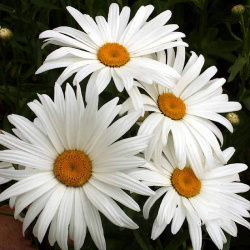 On Sale!
Alaska Shasta Daisy Seeds
Chrysanthemum maximum
Once established, this hardy perennial forms dense colonies of beautiful, white-petaled blooms. This easy-to-grow daisy looks a lot like the Ox Eye Daisy, but it is not as invasive.Quick View$2.98 Pkt - $7.92 / Oz
On Sale!
Alaska Shasta Daisy Seeds
Chrysanthemum maximum
Once established, this hardy perennial forms dense colonies of beautiful, white-petaled blooms. This easy-to-grow daisy looks a lot like the Ox Eye Daisy, but it is not as invasive.Quick View$2.98 Pkt - $7.92 / Oz -
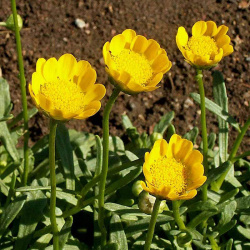 Yellow Daisy Seeds
Chrysanthemum multicaule
Turn a rock garden into gold with these bright blossoms. The trailing plant also makes a stunning addition to hanging baskets or containers. It is an annual that readily reseeds itself.Quick Viewx
Yellow Daisy Seeds
Chrysanthemum multicaule
Turn a rock garden into gold with these bright blossoms. The trailing plant also makes a stunning addition to hanging baskets or containers. It is an annual that readily reseeds itself.Quick ViewxYellow Daisy Seeds
Chrysanthemum multicaule
Turn a rock garden into gold with these bright blossoms. The trailing plant also makes a stunning addition to hanging baskets or containers. It is an annual that readily reseeds itself.
$3.48 Pkt - $16.57 / Oz -
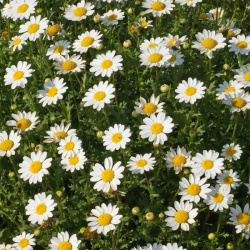 Creeping Daisy Seeds
Chrysanthemum paludosum
These sweet little daisies are a perfect choice for rock gardens, containers, window boxes, or as a ground cover. The low-growing Chrysanthemum paludosum is an annual but reseeds itself to produce plants the following year.Quick View$3.48 Pkt - $14.07 / Oz
Creeping Daisy Seeds
Chrysanthemum paludosum
These sweet little daisies are a perfect choice for rock gardens, containers, window boxes, or as a ground cover. The low-growing Chrysanthemum paludosum is an annual but reseeds itself to produce plants the following year.Quick View$3.48 Pkt - $14.07 / Oz -
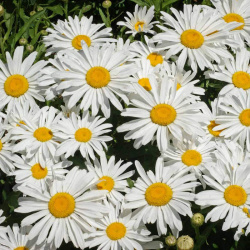 On Sale!
Silver Princess Shasta Daisy Seeds
Chrysanthemum maximum
These classic beauties are sure to win hearts. The plant's low mounding growth habit makes it an excellent choice for borders or containers, and it is not invasive.Quick View$3.48 Pkt - $14.91 / Oz
On Sale!
Silver Princess Shasta Daisy Seeds
Chrysanthemum maximum
These classic beauties are sure to win hearts. The plant's low mounding growth habit makes it an excellent choice for borders or containers, and it is not invasive.Quick View$3.48 Pkt - $14.91 / Oz





